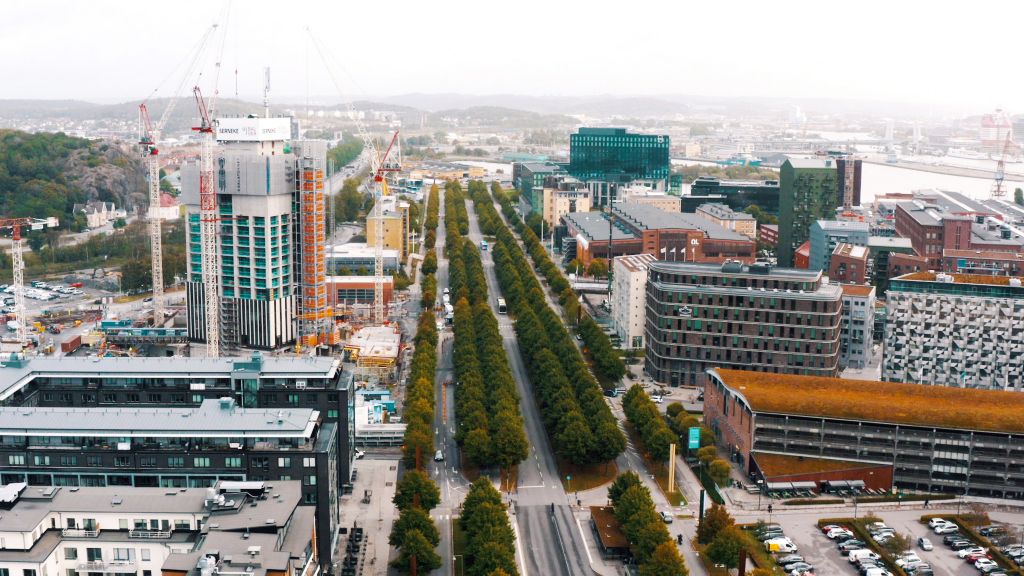Noise study proves electric buses create new opportunities for urban planning

Volvo Buses
ČESKÁ REPUBLIKA

Noise is one of the biggest health hazards in cities. According to the WHO, noise from traffic has a detrimental effect on almost one in three people in Europe, and one in five are regularly exposed to noise levels at night that are high enough to impair health.
“If you are exposed to high noise levels for a long period of time, it can affect your ability to concentrate, increase physical stress and cause sleeping problems. Minimising noise is therefore very important when we plan new residences,” says Belma Krslak, an environmental analyst and sound expert at the Environmental Administration in Gothenburg, Sweden's second largest city.
Electric buses make a big difference in low-frequency noise
In many large cities, much of the traffic noise comes from thoroughfares. But heavy traffic driving at low speeds within the city centre and surrounding residential areas is also a major problem.
“Low-frequency noise from heavy vehicles is difficult to mitigate, and it penetrates homes differently to high-frequency sounds. This is where we see the electrification of vehicles making a big difference,” says Belma Krslak.
The electrification of public transport allows us to plan new routes closer to existing homes and build new homes closer to the bus lines we already have, without disturbing residents.
Gothenburg is at the forefront when it comes to electrifying public transport. The first electric buses rolled out into the city already in 2015, and in 2019, all-electric buses were introduced on route 60, which runs through several densely populated residential areas.
Clear health benefits for residents
In a new scientific study, the University of Gothenburg has investigated how the transition to quiet, electric buses on route 60 has affected the health of residents. And the difference is distinct: both in terms of the actual noise levels and what residents themselves reported. Among the study’s findings, the proportion of residents who noticed noise from buses fell from 75 to 39 percent.
The observed health benefits were also clear. The proportion of residents who felt tired once or twice a week dropped from 49 to 39 percent. The proportion feeling depressed went from 22 to 17 percent. Significantly, fewer people said they felt tired during the day.
“Just along this section alone, we have previously received many complaints from people disturbed by noise. Even if the study has in many ways confirmed what we already thought, we’re still very happy that the electric buses have made such a noticeable difference to residents. It provides important insights for those of us who work with urban development,” says Belma Krslak.
Test with indoor bus stops
Like many large cities, Gothenburg is growing rapidly and over the next 15 years, it will provide space for 115,000 new residents. This puts high demands on the planning of new housing and infrastructure. Quiet and emission-free public transport can operate in places that are not currently open to traffic.
“We see high densification as the most sustainable way to grow and the electrification of public transport creates enormous opportunities. It allows us to plan new public transport routes closer to existing homes and build new homes closer to the bus lines we already have, without disturbing residents. Electric buses also create the opportunity to have stops indoors, which has been tested here in Gothenburg with positive results,” says Belma Krslak.
All city buses will be electric by 2030
Currently, Gothenburg has more than 170 electric buses and by 2030, all city buses will be electrified. Fossil-free public transport is an important part of the city's goal of being climate neutral and reducing traffic noise. But to achieve these goals, it is essential that traffic flows are reduced and that more people switch to sustainable transport.
“If we can offer residents quiet and emission-free public transport close to where they live, then their need to have their own car will decrease.”
Urban development is a long process and according to Belma Krslak, it will be a while before we see the full impact of electrification. However, the noise study confirms that this is the right way to go.
“The results show that the transition to electric buses has already had a positive impact on residents' health. The electrification of heavy vehicles within the city is a very important step in our quest to create better and more sustainable living environments.”
Do you want to learn more about the noise study and the opportunities electric buses create for future city planning? Watch our broadcasted event “Healthier cities with electric buses”.